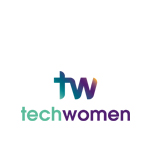The New Zealand Technology Industry Association, which became known as NZTech, began in 2008 with the aim of promoting and nurturing New Zealand’s tech industry through a membership model. [1] By 2019, many, if not all, of New Zealand’s tech-related companies were a part of NZTech.
TechWomen, a subsidiary volunteer group within NZTech, had its beginnings in the early 2010s. In 2011, Candace Kinser became chief executive of NZTech [2] and started organising informal lunches for women in tech. These provided a chance for women in the industry to network, and sparked the beginnings of the movement that became TechWomen. [3]
In 2015, NZTech released a report outlining the need for more women in the New Zealand tech industry. It reported:
According to the 2013 census, women make up only 23% of people employed in IT occupations and only 28% of people in all roles across the tech sector. The number of women planning to enter the sector is also declining with only 3% of 15 year olds in New Zealand considering a career in computing professions. [4]
The report concluded that improving the gender balance in the industry would reduce the skills shortage. It also stated: ‘given the plethora of research that also shows that having gender balance in tech companies improves their financial results, advancing women is no longer just a corporate social imperative, it is a competitive imperative.’ [5] The report called the women’s group within NZTech ‘Tech Women’, although it is not known when the name first came into use.
In 2016, NZTech Women events included meetups and breakfasts in Auckland, Wellington and Christchurch, as well as NZTech Executive Women quarterly lunches. [6] At the end of 2016, Eva Sherwood joined the NZTech board and became the chair of TechWomen. In a later interview she said that TechWomen was ‘a group of volunteers who got together occasionally and ran some events’. [7] She began consolidating the organisation’s purpose through consultation and workshops, before deciding on a programme of work that both supported women already in the industry and sought to increase the number of women overall. [8] Three examples of TechWomen’s work were ShadowTech, Return to IT, and mentoring circles.
ShadowTech
The ShadowTech programme encouraged female high school students to consider a career in technology. Each year, girls in Years 9–11 spent the day at a business learning about the breadth of jobs available in the tech industry. They saw what a tech workplace was really like, often dispelling the myth that working in tech is all about sitting at a computer. Schools ranging from Decile 1 to 10 nominated themselves to take part.
TechWomen Executive Director Edwina Mistry started this programme in 2014 with 42 girls in Auckland. By 2018, 600 girls across eight cities were taking part, visiting many of New Zealand’s larger technology companies, including MYOB, BNZ, Xero, Z Energy and Air NewZealand. [9] In 2019, the aim was to involve 400 girls. [10]

TechWomen.
Edwina Mistry with high school students during a ShadowTech event.
Return to IT
Return to IT encouraged women who had had a break of two to five years from the technology industry to return to work. A pilot programme was established by the Ministry of Business, Innovation and Employment (MBIE) and the Ministry for Women in 2017. It supported women returning to work, and the businesses which hired them, through introductory training and mentoring. TechWomen was a partner in the project, assisting in finding ICT women professionals who had left the industry to take part in the programme.
Mentoring circles
In 2018 TechWomen trialled mentoring circles. Instead of the traditional one-on-one mentor-mentee relationship, the circles brought together eight women: two mentors with experience and knowledge and six mentees from a mix of businesses and roles within the industry.
Speaking in 2019, Eva Sherwood was quick to point out that while mentoring and support groups were valuable for encouragement and gaining perspective, these alone would not shift the gender balance in the industry. They were likely to help women stay and progress within the tech industry, but not to join it in the first place.
Like many women’s organisations, TechWomen was attempting to change an industry as a minority. Reflecting on the effectiveness of women alone changing the tech industry, Eva Sherwood said:
Change is only going to come when we engage the 70 percent of our industry, our male colleagues, in the conversation. I don’t think we’ve done that to date, I think having organisations like mine, called TechWomen, is inherently exclusive and not actually helping towards taking the 70 percent on the journey towards understanding why this is important and how they can help. [11]
Yet there were signs that the tech industry was willing to change, for example NZTech’s financial support of TechWomen.
In May 2019, TechWomen had more than 150 official members and 1100 members on LinkedIn (a professional networking website). Plans were in development to lift diversity and inclusion up to the NZTech Board level, so that it would stretch across the NZTech communities and become an everyday consideration, in the same way as health and safety. Under these plans, TechWomen would continue to operate as a brand and a community.
Kate Jordan
This essay written by Kate Jordan was published online in Women Together: a History of Women’s Organisations in New Zealand in 2019.
Notes
[1] Companies Office, 2198280.
[2] Candace Kinser, LinkedIn profile, https://www.linkedin.com/in/candacekinserreed/
[3] Mistry, Edwina, ‘Cultivating Diversity In Tech’, Access Granted podcast, 10 July 2018, https://accessgranted.nz/episodes/2018/7/10/edwina-mistry-cultivating-diversity-in-tech
[4] New Zealand Technology Industry Association, ‘Advancing women to provide needed tech sector skills’, July 2015, https://staging.nztech.org.nz/wp-content/uploads/sites/8/2019/03/NZTech-Skills-Talent-Women-Jul-2015.pdf
[5]New Zealand Technology Industry Association, 2015.
[6] New Zealand Technology Industry Association, ‘NZTech Annual Report 2016’, https://staging.nztech.org.nz/wp-content/uploads/sites/8/2019/02/NZTech-Annual-Report-2016-online.pdf
[7] Sherwood, Eva, interviewed by Kate Jordan, Wellington, 2019.
[8] Sherwood, 2019.
[9] Paredes, Divina, ‘Overcoming OCT’s barriers to diversity’, CIO, 30 May 2018, https://www.cio.co.nz/article/641651/overcoming-ict-barriers-diversity/
[10] Email from Eva Sherwood.
[11] Sherwood, 2019.
Further sources
TechWomen website: https://staging.techwomen.nz/






